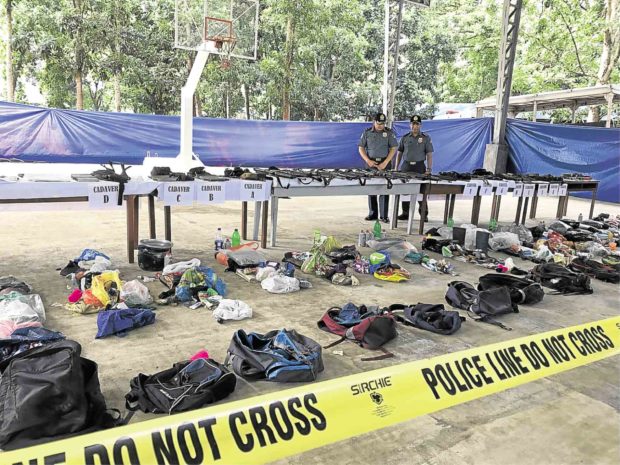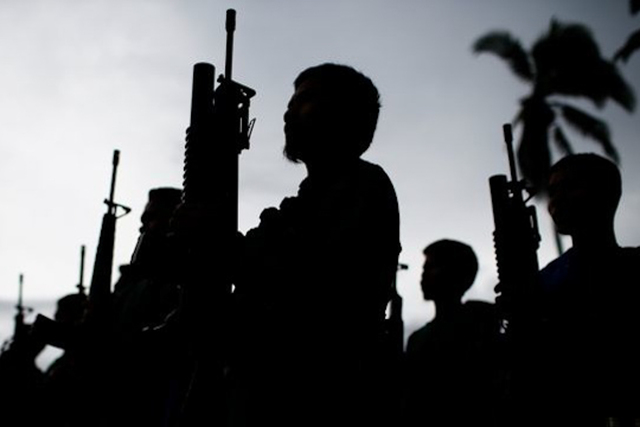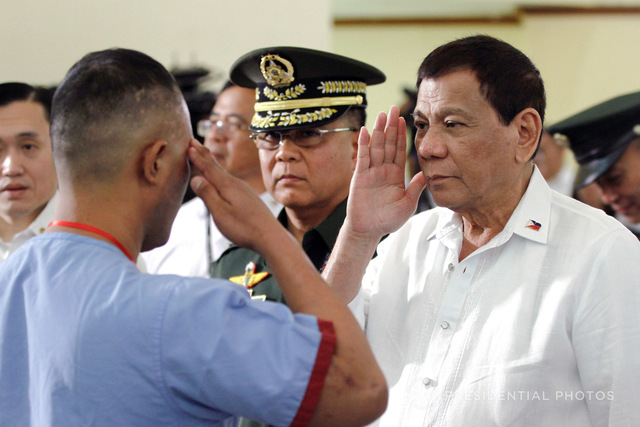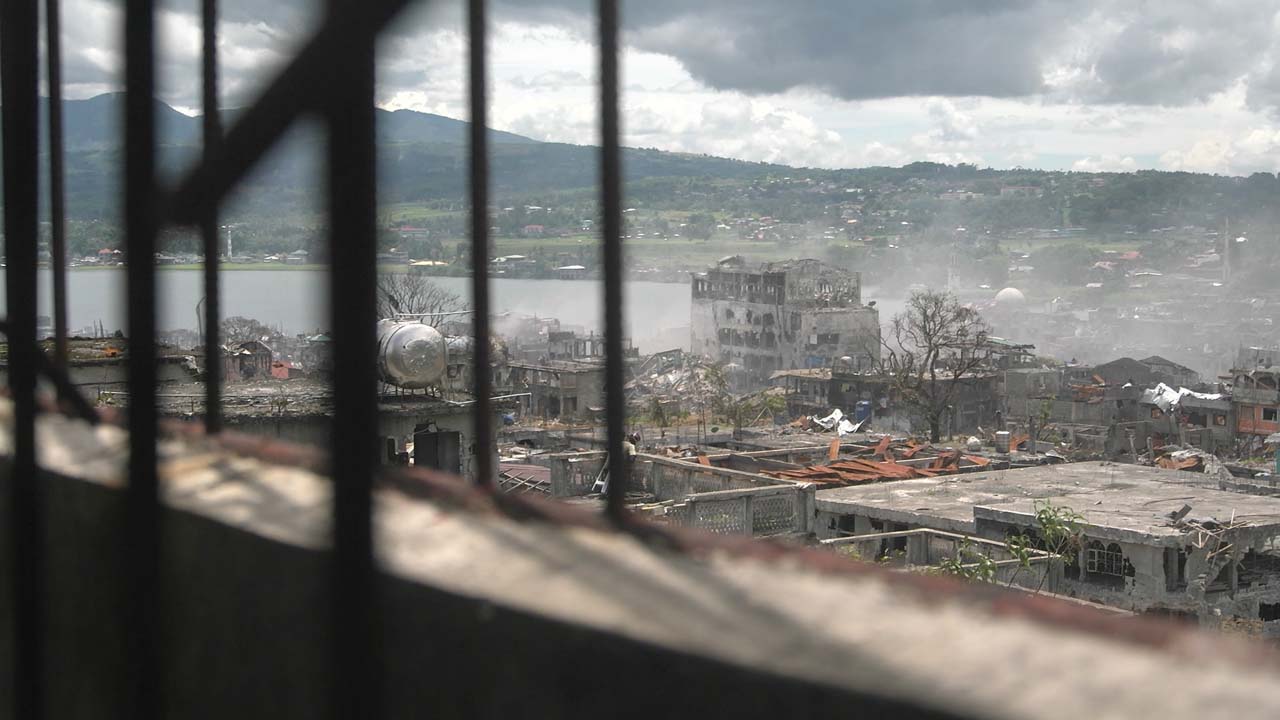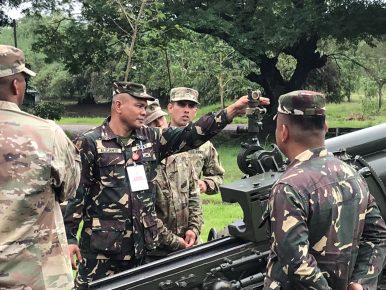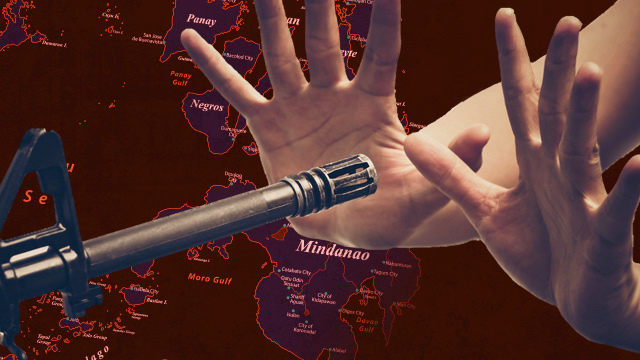From MindaNews (Nov 28):
Duterte at Bangsamoro Assembly: what’s the special session of Congress for?
At the 1st Bangsamoro Assembly in Sultan Kudarat, Maguindanao last Monday, President Rodrigo Duterte reiterated his campaign promise to push for federalism as what is at stake is “the preservation of the Filipino republic and to correct a historical injustice” and called on Congress to hold a special session for a day or two to address the concerns of the Moro Islamic Liberation Front (MILF) under Al Haj Murad Ebrahim and the Moro National Liberation Front (MNLF) under Nur Misuari to fully implement the peace agreements government signed with them.In his 30-minute speech, Duterte made no mention of the Bangsamoro Basic Law (BBL) for whose passage the Bangsamoro Assembly was convened by the Bangsamoro Transition Commission (BTC), the MILF-led 21-member body that was tasked to draft the BBL, composed of representatives from the government, the MILF and the MNLF faction of Yusoph Jikiri and Muslimin Sema. The BTC was created by executive order pursuant to the Framework Agreement on the Bangsamoro (FAB) signed by government and the MILF on October 15, 2012 and the Comprehensive Agreement on the Bangsamoro (CAB) on March 27, 2014.
 President Rodrigo Roa Duterte, in his speech during the Bangsamoro Assembly held at the Old Provincial Capital in Sultan Kudarat, Maguindanao on November 27, 2017, declares that Muslims and Christians should unite to preserve the Republic of the Philippines. ALBERT ALCAIN/PRESIDENTIAL PHOTO
President Rodrigo Roa Duterte, in his speech during the Bangsamoro Assembly held at the Old Provincial Capital in Sultan Kudarat, Maguindanao on November 27, 2017, declares that Muslims and Christians should unite to preserve the Republic of the Philippines. ALBERT ALCAIN/PRESIDENTIAL PHOTOFormer Sulu Governor Jikiri, now chair of the MNLF faction formerly referred to as MNLF Executive Council was at the Bangsamoro Assembly. MNLF founding chair Misuari was not there but is reportedly convening another Bangsamoro gathering in Davao City.
“Now, there are so many drafts coming from Nur (Misuari), coming from Kagi Murad and everybody else, and the scholars, and also UP (University of the Philippines) is coming up with a position paper,” Duterte said. He was apparently referring to the draft BBL of the GPH-MILF peace process that the BTC submitted on July 17, when he mentioned Murad.It is not clear what draft of the GPH-MNLF Misuari faction Duterte was referring to: the draft amendatory law to strengthen the Autonomous Region in Muslim Mindanao (ARMM) which it was supposed to submit to the President in July but did not “to avoid complications” with the GPH-MILF peace process. There is no draft amendatory law from the MNLF-Misuari faction pending in Congress.
Instead, the MNLF Misuari faction pushed for a proposed Provisional Bangsamoro Federal Autonomous Region (B’FAR) under a federal republic, a proposal that would require amendments to the 1987 Constitution.
The drafts from “everybody else, and the scholars, and also UP” apparently refer to position papers on the country’s shift to federalism.
Duterte apparently was still focusing on the “convergence” of the draft laws from the GPH-MILF and GPH-MNLF Misuari when the latter had already opted for a B’FAR.
“I said, one day, one session, Nur, si Kagi (Murad) and all should be there to present their platform. And then we will work out if it can,” Duterte said without finishing his sentence.
“If it’s not in consonance with each other, then we work out but at least Congress and the Filipino people should be given a day to hear you out on what we intend to do. Me? I support you. That is my promise,” the President said.
 President Rodrigo Roa Duterte is greeted by Moro Islamic Liberation Front (MILF) Chairman Al Haj Murad Ebrahim upon his arrival at the Old Provincial Capital in Sultan Kudarat, Maguindanao for his attendance to the Bangsamoro Assembly on November 27, 2017. Also in the photo are Moro National Liberation Front (MNLF) Central Committe Chairman Yusoph Jikiri (beside Murad), Presidential Spokesperson Harry Roque, and Defense Secretary Delfin Lorenzana. ALBERT ALCAIN/PRESIDENTIAL PHOTO
President Rodrigo Roa Duterte is greeted by Moro Islamic Liberation Front (MILF) Chairman Al Haj Murad Ebrahim upon his arrival at the Old Provincial Capital in Sultan Kudarat, Maguindanao for his attendance to the Bangsamoro Assembly on November 27, 2017. Also in the photo are Moro National Liberation Front (MNLF) Central Committe Chairman Yusoph Jikiri (beside Murad), Presidential Spokesperson Harry Roque, and Defense Secretary Delfin Lorenzana. ALBERT ALCAIN/PRESIDENTIAL PHOTOHe reiterated that the law must be inclusive and no one should be left behind.
“Ang akin, it must be inclusive. Lahat. Walang maiwan dito sa peace talks na ito. The MILF, the MNLF, lahat na, Lumad, kailangan kasali” (For me, it must be inclusive. All. No one will be left behind in these peace talks. The MILF, the MNLF, all, Lumad, must be included),” Duterte said.
He said he will “impress upon (Congress) that you have to devote even one day or two days. Hear them out, hear us from Mindanao.”
Duterte inherited four peace agreements with two Bangsamoro revolutionary fronts when he assumed the Presidency on June 30, 2016: the 1976 Tripoli Agreement and 1996 Final Peace Agreement with the MNLF and the FAB and CAB with the MILF. The peace processes with these groups are all on the implementation phase.
Peace and Development Roadmap The Duterte Administration’s Bangsamoro Peace and Development Roadmap approved in July 2016, envisioned the passage of a Bangsamoro law by yearend of 2017 to allow for a plebiscite by mid-2018. Without a new law, the ARMM elections will push through in 2019.
 The 21 members of the Bangsamoro Transition Commission (BTC) with President Rodrigo Duterte (center) at the launch on 24 February 2017 at the Garden Pavilion of the Waterfront Insular Hotel. TOTO Lozano / Presidential Photo
The 21 members of the Bangsamoro Transition Commission (BTC) with President Rodrigo Duterte (center) at the launch on 24 February 2017 at the Garden Pavilion of the Waterfront Insular Hotel. TOTO Lozano / Presidential PhotoThe roadmap also envisioned a BTC that would be represented by the MILF and all the MNLF factions, to ensure a “convergence” of the draft BBL under the GPH-MILF peace process and the draft amendatory law of the GPH-MNLF to fully implement the 1996 Final Peace Agreement.
The BBL will pave the way for the creation of a new autonomous political entity called the Bangsamoro which will replace the nearly three-decade ARMM, a structure that lacks fiscal autonomy and other features needed to ensure genuine autonomy.
The MNLF Misuari faction on the other hand was working on a draft law to amend RA 9054 to strengthen the ARMM, the body that would be abolished once the BBL is ratified in a plebiscite.
Convergence of these proposals would have been done at the BTC level. The MNLF under Jikiri and Sema has three members in the BTC. Misuari, however, did not want to have anything to do with the BTC and in November 2016, when he was granted temporary liberty by the court, Presidential Adviser on the Peace Process Jesus Dureza announced the creation of peace implementing panel for the MNLF-Misuari faction.
On July 19 this year, two days after the BTC submitted its draft BBL to the President in Malacanang, MNLF Peace Implementing Panel chair Randolph Parcasio, concurrent spokesperson of Misuari, told MindaNews they will no longer submit their proposed amendatory law to enhance the ARMM but will instead push for federalism.
 President Rodrigo Roa Duterte poses for a photo with Moro National Liberation Front (MNLF) Chairman Nur Misuari and his wife Tarhata after the meeting with the MNLF and Government Peace Implementing Panels at the President’s Hall in Malacañan Palace on July 18, 2017. SIMEON CELI JR./PRESIDENTIAL PHOTO
President Rodrigo Roa Duterte poses for a photo with Moro National Liberation Front (MNLF) Chairman Nur Misuari and his wife Tarhata after the meeting with the MNLF and Government Peace Implementing Panels at the President’s Hall in Malacañan Palace on July 18, 2017. SIMEON CELI JR./PRESIDENTIAL PHOTO“In line with conversations between President Rodrigo Duterte and MNLF Chairman Nur Misuari in the previous five meetings which among others touched on federalism, the MNLF will no longer submit a draft New Autonomy Law to avoid complications. The MNLF-GPH Process will have to contribute directly to the fast tracking of federalism,” Parcasio told MindaNews.
Parcasio issued the statement after Misuari led a delegation that paid a courtesy call on President Duterte in Malacanang on July 18, a day after BTC’s submission of the BBL.
The proposed Bangsamoro comprises the present five-province, two-city ARMM, the cities of Cotabato and Isabela, and the six towns in Lanao del Norte and a few villages in some North Cotabato towns that voted yes for inclusion in the ARMM in the 2001 plebiscite.
Misuari’s proposed Provisional B’FAR comprises an area far bigger than the present five-province, two-city ARMM, and even the 13 province-nine-city “areas of autonomy” in Mindanao and Palawan under the 1976 Tripoli Agreement which he signed as chair of the then undivided MNLF. As new provinces and cities were created, the “areas of autonomy” in 1976 now comprise 16 provinces and 15 cities (15 out of 27 Mindanao provinces and 14 out of 33 cities) and Palawan and Puerto Princesa City.
March 2018 passage
Lanao del Sur Rep. Mauyag Papandayan, Jr., chair of the Committee on Muslim Affairs on Sunday told MindaNews that the new target for the passage of the BBL is March 2018, that committee hearings will begin first week of December and public hearings in January-February.
Congress has only seven session days left from November 29 until it goes on recess on December 16. It will resume session on January 15 and will have 30 Monday-to-Wednedsay session days from January 15 to March 23. It will go on break from Mach 24 to May 13 and will have nine session days from May 14 until it adjourns sine die on June 1.
 President Rodrigo Roa Duterte does his signature pose with (from left) Presidential Communications Secretary Martin Andanar, National Security Adviser Hermogenes Esperon Jr., Defense Secretary Delfin Lorenzana, Presidential Adviser on the Peace Process Jesus Dureza, Bangsamoro Transition Commission (BTC) Chairman Ghadzali Jaafar, Moro Islamic Liberation Front (MILF) Chairman Al Haj Murad Ebrahim, Moro National Liberation Front (MNLF) Central Committe Chairman Yusoph Jikiri, Presidential Spokesperson Harry Roque and other guests who attended the Bangsamoro Assembly held at the Old Provincial Capital in Sultan Kudarat, Maguindanao on November 27, 2017. ALBERT ALCAIN/PRESIDENTIAL PHOTO
President Rodrigo Roa Duterte does his signature pose with (from left) Presidential Communications Secretary Martin Andanar, National Security Adviser Hermogenes Esperon Jr., Defense Secretary Delfin Lorenzana, Presidential Adviser on the Peace Process Jesus Dureza, Bangsamoro Transition Commission (BTC) Chairman Ghadzali Jaafar, Moro Islamic Liberation Front (MILF) Chairman Al Haj Murad Ebrahim, Moro National Liberation Front (MNLF) Central Committe Chairman Yusoph Jikiri, Presidential Spokesperson Harry Roque and other guests who attended the Bangsamoro Assembly held at the Old Provincial Capital in Sultan Kudarat, Maguindanao on November 27, 2017. ALBERT ALCAIN/PRESIDENTIAL PHOTOThree committees — Muslim Affairs under Papandayan; Peace, Reconciliation and Unity under Tawi-tawi Rep. Ruby Sahali and Local Government under South Cotabato Rep. Pedro Acharon — are jointly handling four bills on the proposed Bangsamoro law; House Bill 092 filed on June 30, 2016 by Maguindanao Rep. Bai Sandra Sema, Deputy Speaker for Mindanao; HB 6121 filed by Pampanga Rep. Gloria Macapagal-Arroyo on August 3, 2017; HB 6263 filed by Lanao del Norte Rep. Mohamad Khalid Dimaporo on August 24 and and HB 6475 or the BBL version submitted by the Bangsamoro Transition Commission (BTC) and filed by House Speaker Pantaleon Alvarez, Jr. and 97 other Representatives reportedly on September 27. The first three bills are posted on the House website, the bills signed by the authors and stamped received. HB 6475 has not been posted on the website as of November 28.
All bills related to the proposed Bangsamoro law are to be consolidated by the joint committees. If the MNLF-Misuari faction’s draft amendatory law had been submitted to President Duterte and filed with Congress, it would have been included as the fifth bill for consolidation.
At the Senate, Senate President Aquilino Pimentel III filed SB 1608 or the Bangsamoro Autonomous Region Basic Law (BARBL) on November 6, 2017.
Pimentel told MindaNews last week that the Committee on Local Government headed by Senator Juan Edgardo “Sonny” Angara “has vowed to hear BBL immediately after tax reform (bill). “Will ask him what the feasible timetable is,” he said.
http://www.mindanews.com/peace-process/2017/11/duterte-at-bangsamoro-assembly-whats-the-special-session-of-congress-for/
